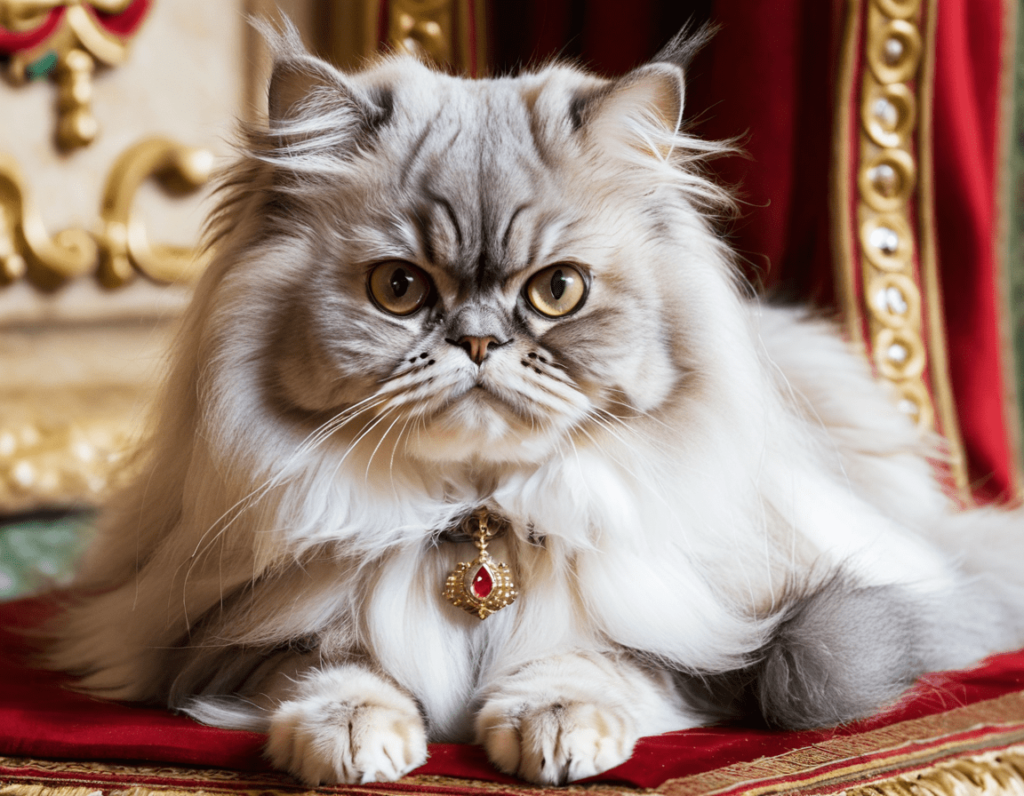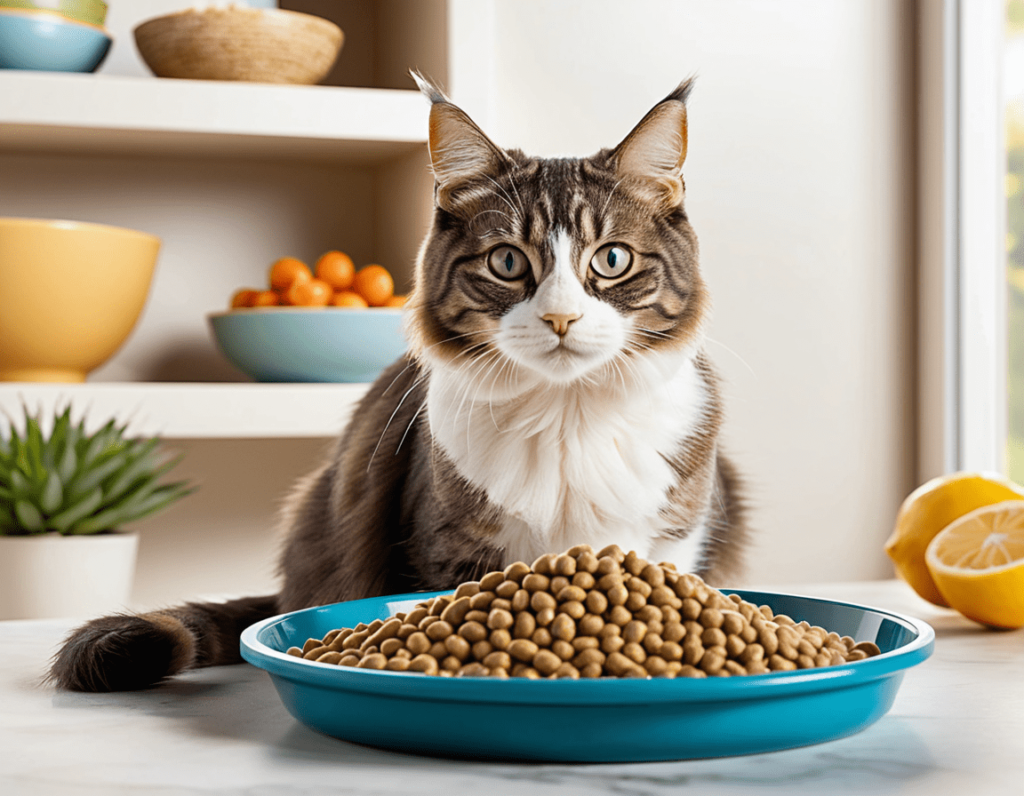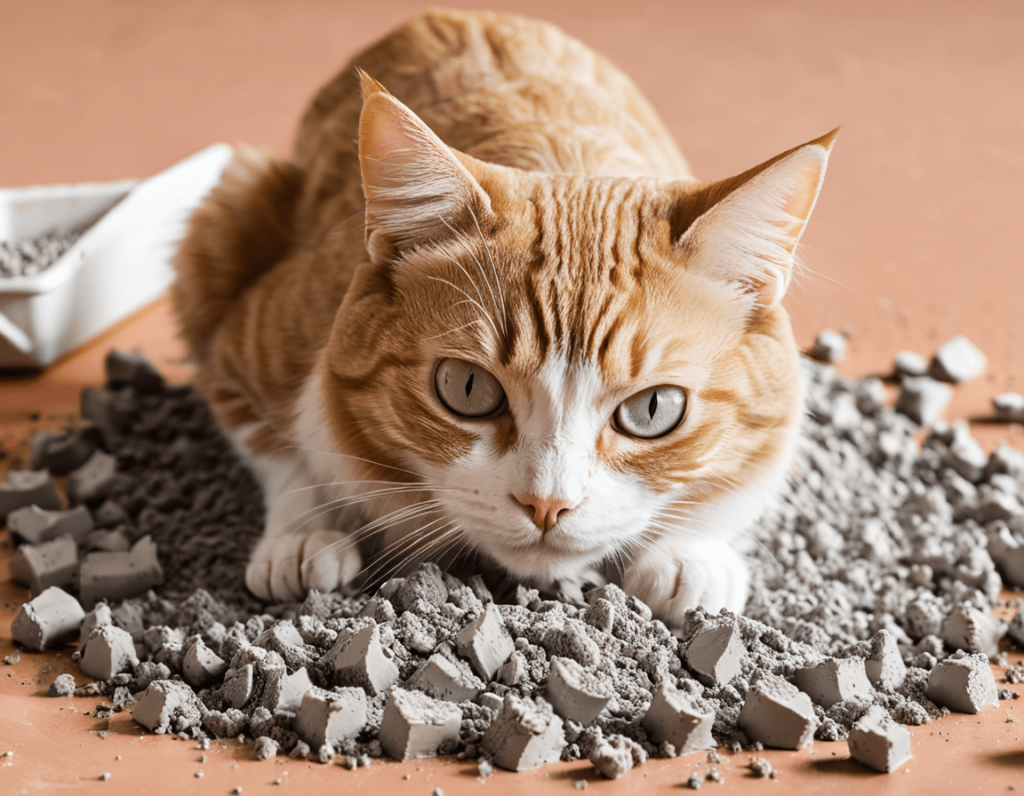
Choosing the right cat litter is a big decision for every cat parent. After all, it’s the one area where your cat is guaranteed to make their “mark.” With so many types out there, from clumping clay to crystal, finding the best litter can feel like a true test of loyalty to your feline overlord. Let’s dive into the world of cat litter and sniff out the best options (no pun intended).
Types of Cat Litter
1. Clumping Clay Litter
The most popular choice, clumping clay litter forms solid clumps around moisture, making it easy to scoop. Most cats love it because it’s soft on their paws, and you’ll love it because it’s easy to clean. But keep in mind that this litter can get heavy, so think twice if your litter box is on the top floor—nobody wants a workout every time they scoop the poop.
Best for: Cats who are picky about texture, and cat parents who don’t mind a little extra dust.
2. Silica Gel Crystal Litter
Silica gel, or crystal litter, is lightweight, absorbs odors well, and doesn’t require as frequent scooping. The crystals absorb liquid and lock in odor, making it a great choice for people who don’t want to scoop daily. However, not all cats are fans of the crystal texture—some will act like you just tried to introduce a foreign object into their precious restroom!
Best for: Busy cat parents who want low-maintenance litter and cats who are okay with a new experience.
3. Pine Litter
Made from compressed pine, this eco-friendly option is perfect for cat parents who prefer natural products. Pine litter has a pleasant, woodsy scent that can help mask odors, but it’s not the best at clumping. While some cats love the soft, pellet texture, others may see it as a challenge to dig out every last pine bit.
Best for: Cats with sensitive noses and environmentally conscious cat parents.
4. Paper Litter
Paper litter, made from recycled paper, is another natural, low-dust option. This litter is usually non-clumping, so it’s best for cats recovering from surgery or with respiratory issues. Though it’s softer than clay, it’s not the best at odor control, so be prepared to change it frequently if your kitty’s a little “extra” in the bathroom department.
Best for: Cats with sensitivities and owners who prioritise eco-friendly materials.
5. Walnut Shell Litter
Made from crushed walnut shells, this natural litter has impressive clumping abilities and a dark color that hides messes. Walnut litter is low in dust and excellent at odor control, but don’t be surprised if your cat treats it like a sandbox. Who knew a litter box could turn into a treasure hunt?
Best for: Cats who love to dig and owners who want something natural and effective.
Odor Control: A Lifesaver for Your Nose
Let’s face it – nobody wants their house to smell like a litter box, including your cat. Look for litter with strong odor control, whether it’s scented or unscented. Just remember that not all cats like scented litter. Cats have powerful noses, so if the litter’s perfume is too strong, they might look at you like, “What did you do in here?”
Dust Levels: Don’t Let the Dust Settle
No one wants a cloud of dust every time they scoop. Low-dust litters are ideal for both you and your cat, especially if anyone in the house has allergies. Many clumping clay litters can get dusty, so if that’s a deal-breaker, consider crystal, paper, or pine alternatives.
Clumping vs. Non-Clumping
Clumping litters make it easy to scoop only what’s been “used,” helping the litter box stay fresh longer. Non-clumping litters, on the other hand, need more frequent changes but can be a good option for kittens or cats with certain health issues.
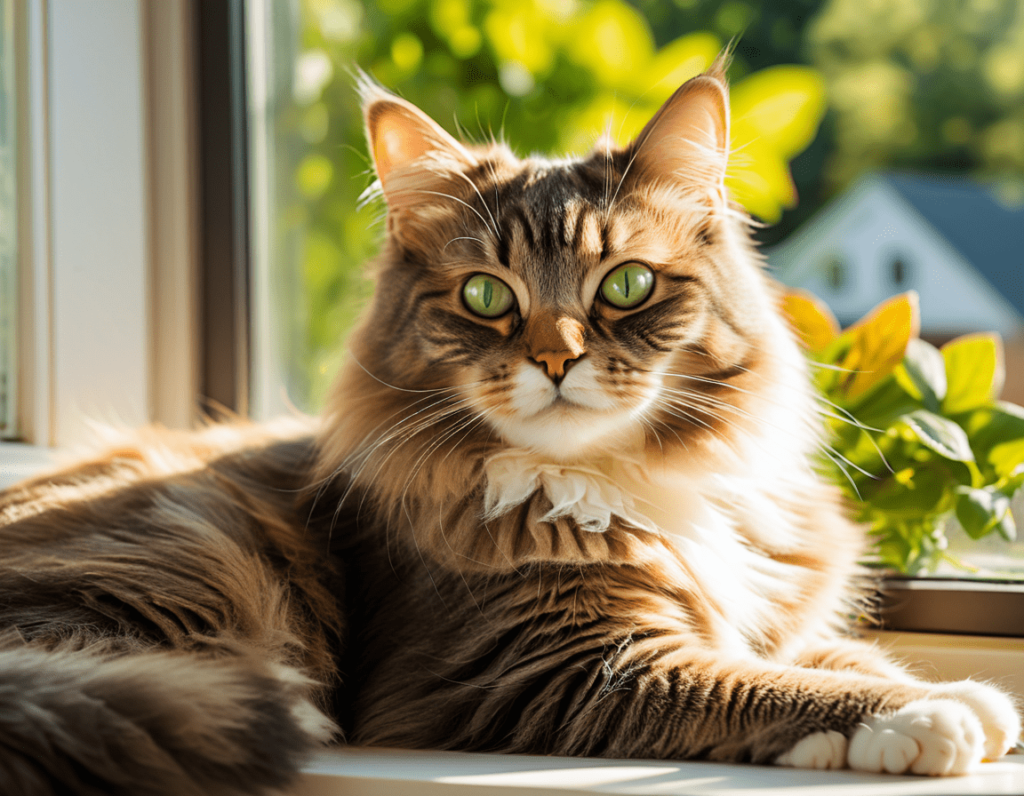
Some Humor for the (Litter) Box
If you’re a cat parent, you’ve probably noticed that cats can be quite particular about their “bathroom.” Some cats act as if they’ve just completed a masterpiece after they use the box – taking a step back, staring, maybe even scratching around the box as if to say, “Behold my creation!”
Wrapping It Up
In the end, the best cat litter is the one that keeps both you and your cat happy. Trying different types might be necessary to find the perfect match. And remember, a happy cat equals a happy home, with a litter box that everyone can live with (and breathe around).
Whether you go for the tried-and-true clumping clay or the eco-friendly pine, just know that your cat appreciates your efforts. Well, they might not show it – they’re cats, after all. But deep down, under all that aloofness, they love you… as long as the litter box is clean.
The Importance of Regular Litter Box Maintenance
No one likes a messy bathroom, not even your cat! Regular cleaning is key to maintaining both the litter box and your home’s overall freshness. Scooping daily is highly recommended – think of it as a daily ritual, like your morning coffee but without the caffeine.
If you want to keep your kitty’s bathroom experience as pleasant as possible, consider changing the litter entirely every couple of weeks. This helps prevent any buildup of odors and keeps everything fresh. You can also try washing the box itself with mild soap and water to remove any residue that might cause smells.
Litter Box Placement: Not Just About Convenience
Where you place the litter box can be just as important as the type of litter you choose. Cats like privacy but not isolation, so make sure the box is in a quiet, low-traffic area. If it’s tucked away in a basement or closet, your cat might decide to take their “business” elsewhere, which could lead to unexpected messes. It’s a fine balance – your cat deserves their space, but they also don’t want to feel like they’ve been banished to a dark corner.
And, of course, always keep the box away from their food and water bowls. Cats are neat freaks, after all, and they don’t want to do their business near their meals.
A Little Humor About the Litter Box Situation
Let’s face it, the world of cat litter can sometimes feel like a never-ending comedy show. You can spend hours researching the “best cat litter” or the “best odor control,” only for your cat to suddenly turn up their nose at the box you spent all that time picking out. And if you’re like many cat owners, you’ve probably caught your feline friend engaging in the classic “I’m trying to bury my poop but nothing’s happening” routine. Don’t worry, your cat is not questioning their life choices – they just want the perfect place to do their business. After all, it’s their kingdom.
Conclusion: It’s All About Finding the Right Fit
When it comes down to it, the best cat litter is the one that suits both your cat’s preferences and your lifestyle. Whether it’s clumping, non-clumping, eco-friendly, or something in between, making sure your cat’s bathroom is both comfortable and easy to clean will make you both happier. And remember, it’s not just about the litter itself – it’s about creating a space where your cat feels safe and satisfied. After all, a happy cat makes for a happy home.
So, the next time you scoop the litter box, take a moment to appreciate how your cat sees it – their throne, their sanctuary, their personal space. And maybe, just maybe, they’ll show their appreciation by giving you that sweet, if slightly aloof, purr of approval.
Happy scooping!
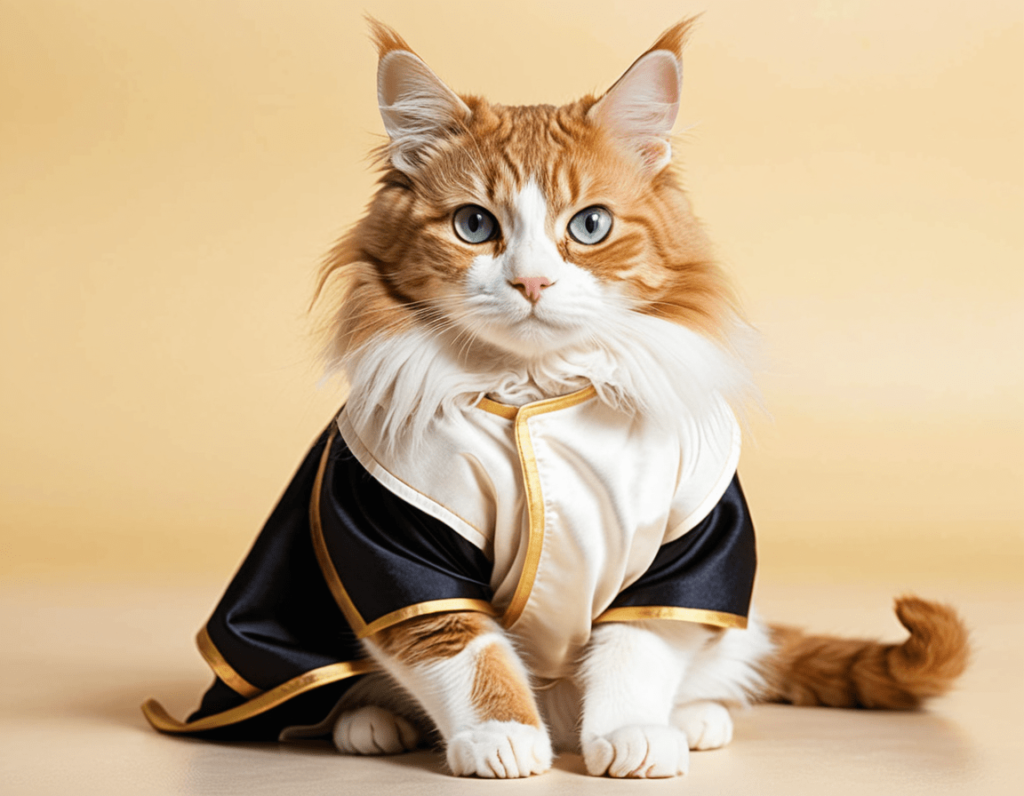
FAQs About Cat Litter: Your Top Questions Answered
Choosing the right cat litter can raise a lot of questions for cat owners. Don’t worry – we’ve got you covered with some of the most common questions about cat litter. Let’s dive in!
1. What’s the best cat litter for odor control?
Answer: The best cat litter for odor control largely depends on your cat’s preferences. Clumping clay litter is a top choice because it absorbs moisture and forms tight clumps, making it easy to scoop and control odors. Silica gel crystals are another great option, as they absorb liquid and odors very well without clumping. If you’re looking for something natural, pine and walnut litter are good eco-friendly choices that also have solid odor control.
2. How often should I change the cat litter?
Answer: It’s recommended to scoop the litter box daily, removing waste and clumps. This keeps odors in check and prevents buildup. Changing the litter entirely should be done every 2-3 weeks, or more often if your cat is using the box heavily. If you’re using a non-clumping litter, you may need to replace it more frequently.
3. Can I use scented cat litter?
Answer: Scented cat litter can help mask odors, but it’s not always the best option for every cat. Some cats are sensitive to strong fragrances and may avoid the box altogether. If you decide to use scented litter, look for a mild fragrance that won’t overwhelm your cat’s sensitive nose.
4. What’s the difference between clumping and non-clumping cat litter?
Answer: Clumping litter forms solid clumps when it comes into contact with moisture, making it easy to scoop waste out of the box. It helps keep the litter fresh longer and reduces odors. Non-clumping litter, on the other hand, doesn’t form clumps and must be replaced entirely more often. Some cats prefer the softer texture of non-clumping litter, while others favor the ease of clumping varieties.
5. Is natural cat litter better for my cat?
Answer: Natural cat litters, such as those made from wood, corn, wheat, or walnuts, are often more eco-friendly and can be gentler on your cat’s paws. They can also be biodegradable, making them a better choice for environmentally-conscious pet owners. However, these types of litter may not always clump as well or have the same odor control as traditional clay-based litters.
6. Can I use regular sand as cat litter?
Answer: Using regular sand or dirt is not a good idea for your cat’s litter box. Sand doesn’t offer the odor control or clumping benefits of cat-specific litter, and it could also be abrasive on your cat’s paws. Additionally, sand doesn’t absorb moisture as well as cat litter, which means the box would need to be cleaned more often.
7. How do I get my cat to stop kicking litter out of the box?
Answer: Cats often kick litter out of the box when they’re digging or scratching to bury their waste. To reduce this, consider using a high-sided box or a covered litter box. You can also try a litter mat outside the box to catch any litter that escapes. Just be sure your cat can still comfortably enter and exit the box!
8. Why does my cat seem to dislike the new litter I bought?
Answer: Cats can be very particular about their litter, and switching to a new type can sometimes throw them off. If your cat seems to avoid the box, it might be because they don’t like the texture, scent, or brand of the new litter. Try mixing a little of the old litter with the new one and gradually increasing the new litter amount until your cat gets used to it.Answer:
9. What’s the best litter for multiple cats?
Answer: For homes with multiple cats, clumping litters that have strong odor control are often the best option. Litter that absorbs moisture quickly and can be scooped easily will help keep the box fresh for longer. You might also want to consider having more than one litter box – the general rule is one box per cat, plus one extra.
10. Can I flush cat litter?
Answer: While some litters, such as flushable clumping litters, are marketed as being safe for flushing, it’s important to check your local plumbing guidelines. Even flushable litter can cause clogs in pipes or damage sewage systems if flushed improperly. It’s usually safer to scoop the litter into a trash bag instead.
11. How can I reduce the smell of the litter box between cleanings?
Answer: To keep your litter box smelling fresh, you can try adding a litter box deodorizer or baking soda to the litter. Activated charcoal filters in covered boxes can also help absorb odors. Additionally, regularly scooping out waste and keeping the box clean will go a long way in reducing smells.
12. Is there a "best" cat litter?
Answer: The best cat litter is the one that suits both your cat’s needs and your lifestyle. Whether you choose clumping, non-clumping, natural, or scented litter, the right choice depends on your cat’s preferences and your ability to clean and maintain the box. It might take a little trial and error to find the perfect litter, but once you do, you and your cat will be happily coexisting in a clean and comfortable home.

